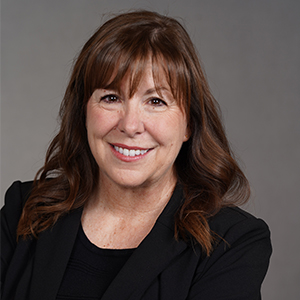The mood was upbeat as the Mortgage Bankers Association Secondary Market Conference and Expo kicked off in New York City on Sunday with a panel on executive perspectives, but the message from the first panel contained a warning.
Kristy Fercho, president of mortgage banking at Flagstar, David Schneider, CEO at Stearns Lending, Susan Stewart, CEO at SWBC Mortgage, and Mike Weinbach, CEO at Chase Home Lending, discussed the significant challenges facing the market right now but chose to focus on the silver lining behind the giant looming rain cloud.
Below are some highlights from the session.
On the current mortgage environment:
“It’s a brutally competitive market right now,” Weinbach said. “Typically the way this ends up is a shakeout, and the sooner the better.”
Schneider noted that even with companies finding more efficiencies in their process, something will have to give. “I think that capacity needs to come out of the system. There has been a lot of growth in independent banks, but they built their business with margins much higher than we see today.”
Stewart agreed. “A lot of companies have seen significant growth, but they have not built their business on a sustainable model. They have the best rates, the best compensation — this model will squeeze itself out pretty quick.
Fercho said some businesses are originating every loan at a loss just because they are at overcapacity. “People are doing that just hoping there will be a bounce back that will get us all out of it and it will be back to business as usual.”
On the changing role of the FHA as large banks have largely exited those loan programs:
Weinbach noted that Chase ranked No. 84 in the list of top FHA lenders, but said that the acting FHA director provided some hope for changing the narrative.
“I think there is a real opportunity for the FHA program to become safer for banks to participate in,” Weinbach said. “The biggest issues are overly broad certifications that create the risk of even minor mistakes leading to very big penalties.”
Weinbach said there could be administrative solutions and legislative solutions to this issue, but that any fixes would have to go beyond the current administration to be effective.
Stewart said there was no incentive for large banks to be in the market, and their exit hurt other smaller players. “If you take out the top group of bank lenders because it is too high risk for them to participate, this isn’t good for anybody. It’s better for everybody if there are bigger players participating,” Stewart said.
Fercho saw the large banks’ actions as a warning sign. “It really is an issue when large banks go. What is happening with the risk that is having them walk away? Now we see people in conforming loans refinancing into FHA mortgages — that is not what it was designed for.”
On affordable housing:
Stewart noted that in many places the costs to comply with local regulations pushed the cost of developing lots out of the range of truly affordable housing before the house was even built. Add labor shortages and the rising cost of materials and the lack of affordable housing is inevitable. The only solution is a very local effort between cities, lenders and labor leaders to create an affordable housing product.
“There is still a big, burning desire for homeownership, but until you solve those problems, it won’t happen,” Stewart said.
Schneider sees the lack of affordable housing as an opportunity for independent banks to develop relationships with nonprofit groups, and Fercho lauded the public/private partnerships that have worked well in places like Cleveland and Detroit.
On the potential of big data:
“It’s exciting and terrifying at the same time,” Stewart said. “When we look at Amazon, or something Amazon-like, they are able to predict when you will need to buy paper towels. What are they going to do with all the data they have as far as predicting when you need to buy a house, or refi?”
Schneider sees big data as a big opportunity to improve pricing and to decide which markets they should expand into. “Not every market is equal, and you have to think about how you match your products — your specialty — with a specific market. You can’t do that without a deep dive into the data.”
What about fintechs?
Weinbach described the evolution of fintech companies from their first entrance into the market, when they wanted to provide a complete end-to-end solution, to the latest iteration, which takes a more measured approach. “Fintech 2.0 is much more about taking a vertical part of the industry and taking it and making it better, and partnering with people who have distribution.”
Fercho talked about the way Amazon and Google have helped define the way everyone thinks about technology and customer service. The key for the mortgage industry is in using what we already know about borrowers to meet their expectations.
“The advent of APIs has us thinking about technology in different ways. APIs allow you to be able to plug and play, and see — does this work for us? If not, get rid of that and try something else,” Fercho said. “This is where we compete and how we differentiate ourselves in this market: How does the customer want to engage, and do we have the platform to make that happen?”
On the lack of private capital:
“I think 10 years ago, if you had said that in 10 years, unemployment would be under 4%, the GDP was growing and 80% of the market was supplied by the government — it would have been laughed at,” Weinbach said.
He attributed the lack of private capital to heavy regulation, but also by the definition of the qualified mortgage.
“I think QM was intended to make it safe for securitization to come back, but it’s had the opposite effect. Now QM means quality, but it’s a very ineffective way to measure something. It’s like using a scale to figure out how tall someone is,” Weinbach said.
He thinks the answer could lie in a prime ATR product — being developed right now at Chase — that could be just as high-quality as a QM loan, but without some of the restrictions.
Fercho pointed to Flagstar’s success in closing a number of securitizations over the last year as a sign that there is definitely interest from the private market. “There are a bunch of players in the market who are curious about it, although there is still some skepticism about the non-QM loans and understanding what the collateral is,” Fercho said. “Once they see how the collateral performs they will get more comfortable with it.”
Schneider sees private equity playing a role in the market in a different way — in their ownership of independent mortgage banks, like Stearns. “There’s not a shortage of capital but a shortage of confidence in the system,” Schneider said. “Once that builds, you’ll see capital come in pretty rapidly.”






